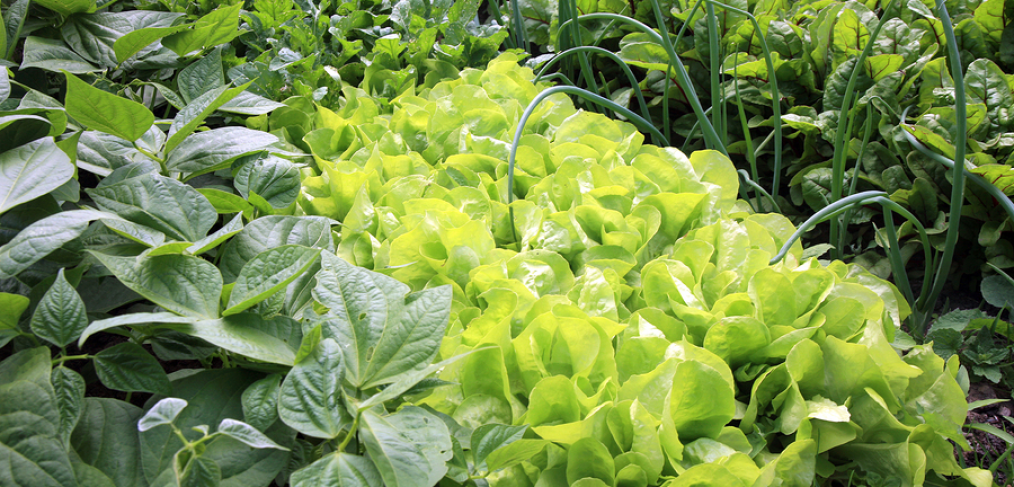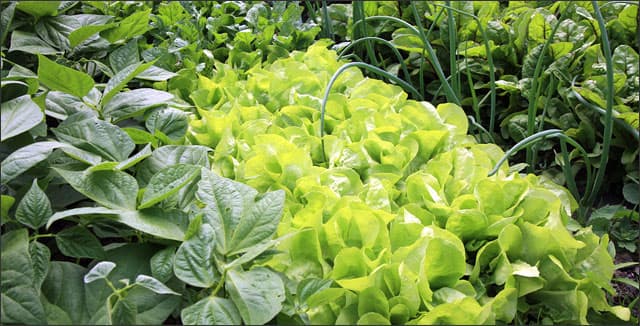
The Wacky, Wonderful World of Permaculture Gardening

If you’re tuned-in to the world of gardening, have been in discussion with any Wendell Berry lovers, love to eat at farm-to-table joints whenever you can, or you were a hippie in another lifetime, you might have heard the word “Permaculture.”
You don’t have to be into any of those things because the idea of permaculture is infiltrating the agricultural landscape as surely as the small organic farm, backyard chicken-keeping or crusades to save the honey bees.
If you’re reading this now, you’ve probably heard the word. However, you may not know what in the world it means.
What Is Permaculture Gardening?
Maybe you’ve heard the words “Food Forest,” and you even have an idea of what it means. You are on the right track.
But before we get into what permaculture experts regard as the major tenets of the movement, let’s explore where the word permaculture came from and what it has come to mean.
Permaculture gardening, in practice, if not in name, has been around for millennia. The method of creating sustainable agricultural practices emerged as some of the first of such practices back when people stopped hunting and gathering and started trying to grow their food. Some permaculture gardening practices are in use by modern farmers.
The word permaculture, however, was coined in 1978 by Professor of biogeography and environmental psychology at the University of Tasmania Bill Mollison. Here’s how he defines it:
“The conscious design and maintenance of agriculturally productive systems which have the diversity, stability, and resilience of natural ecosystems. It is the harmonious integration of the landscape with people providing their food, energy, shelter, and other material and non-material needs in a sustainable way.”
The word permaculture is a contraction of the words permanent and agriculture. It also meant to encompass the idea of its being a culture and not just a way of gardening.
Therefore, within the organic gardening community, you might run across this term being used in connection with gardening practices. Additionally, the term is associated with things like:
- Living in a yurt and trading labor for food on a sustainable farm
- Or joining a community of people living in cobb houses
Permaculture Gardening Practices
Since this idea has been around for so long, and since the 1970s when the term was coined, and the Permaculture Design Course was developed. The course’s most fundamental ideas have come to permeate much of the mainstream discussion of food production and life choices.
The idea is simple: sustainability. If your way of producing food is sustainable for the earth, it can become a permanent production method.
Closed Loop Systems
The base layer of the permaculture way of life is the practice of designing a system that can provide for its own needs. This concept is at the core of sustainable fuels, solar and wind power and even fertilizer for your garden foods.
In a permaculture system, instead of importing fertilizer you make a garden that can provide for its own fertilization needs. This can be as basic as raising livestock for manure and composting.
A true closed-loop system would also provide for the livestock on-site. The waste then becomes a resource instead of a problem.
One of Mollison’s most endearing quotes is “You don’t have a snail problem, you have a duck deficiency.”
Perennial Crops
Because tilling the ground twice a year, every year is taxing and time-consuming. Additionally, because it isn’t that great for your soil, permaculturists are all about trying to use perennial crops that can be planted once and keep providing food.
This sounds easy enough when you are talking about apple trees, blackberry bushes, rhubarb, and asparagus.
However, what about most of the plants we eat as the bulk of our diets?
The idea here is Agroforestry – or growing a food forest. You are cultivating edible tree crops along with understory plants that can grow sustainably and happily along with them. For example, consider shade-grown coffee or cacao plantations.
It might not work for every one of your food needs, but it’s certainly more sustainable.
Multiple Functions
This is where the gardening geek can go nuts. Permaculturists like to stack functions in their gardening practices. Your chicken house can become a chicken tractor. The chickens are moved from space to space, scratching, removing weeds and adding manure to the ground in preparation for planting your garden for the year.
Or your rain barrels double as your edible fish tank and aquatic plant farm. Any way in which every component of your structure or landscape can perform multiple functions makes your farm more integrated and more self-sustaining.
Eco-Earthworks
Any food production technique which relies upon irrigation isn’t sustainable on its own. Therefore, permaculturists focus much of their efforts on water conservation.
The focus can take the form of making sure rainfall is carefully used or preserved – terracing or using swales on sloped land, or using a system of canals with raised planting berms in swampy ground.
These methods have been in use by farmers all over the world for many hundreds of years.
Lazy Farming
It’s not truly lazy, as much as it is allowing nature to do its job without getting in the way. Some crops – as the Native Americans knew – grow well together without much effort on the part of the farmer: corn, beans, and squash for example.
With permaculture gardening the more you can utilize the needs of your plants or other systems to work together to save yourself yearly labor the better.
Bringing it Home
Permaculture gardening is a term that has been around since the late 1970s. It is starting to become more well-known in broader culture as this underground movement in food production and way of living is attracting more people.
However, the practices of permaculture gardening have been around for much longer than that. By blending ancient traditions, green gardening, innovations in stacking functions, and creating a self-sustaining system, permaculturists seek to sustain life in a way that is sustainable for planet earth. That’s something worth knowing about.



